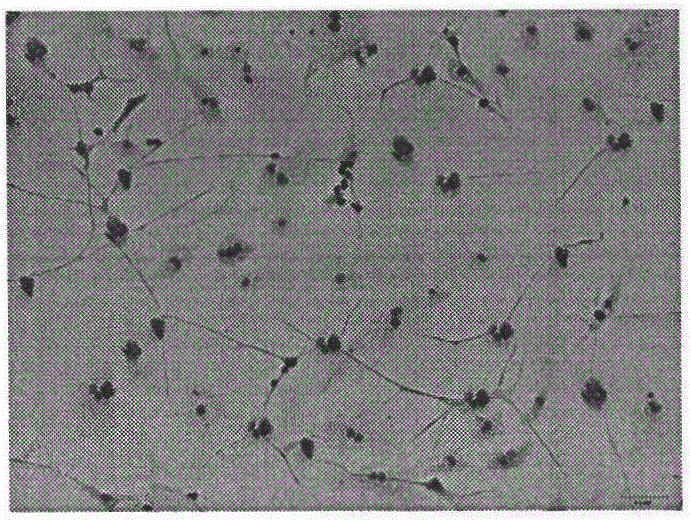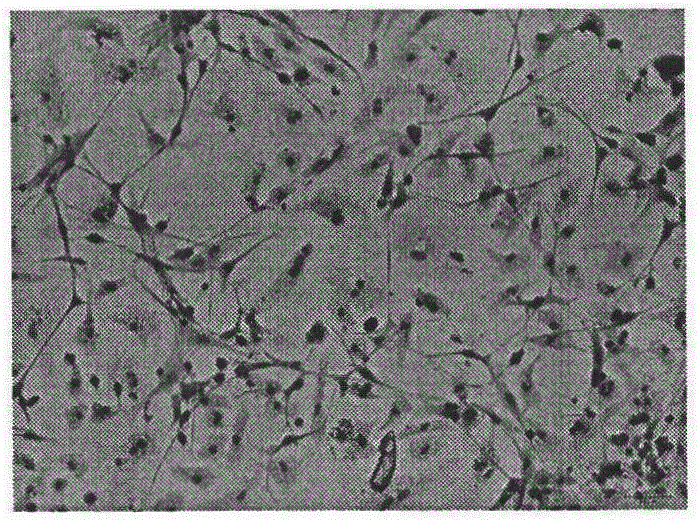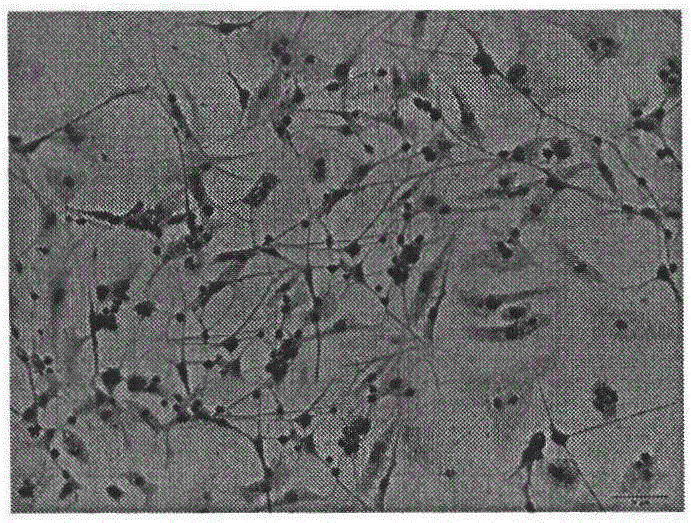Method for separating and culturing mouse cerebellar granule cells
A granulosa cell and culture method technology, applied in the field of mouse cerebellar granulosa cell separation and culture, can solve the problems of reduced number and survival rate of cultured neurons, uncertainty of trypsin digestion intensity, low purity of cerebellar granulosa cells, etc. The effect of saving tedious steps and reducing dosage and improving survival rate
- Summary
- Abstract
- Description
- Claims
- Application Information
AI Technical Summary
Problems solved by technology
Method used
Image
Examples
Embodiment Construction
[0021] In order to present the purpose and advantages of the present invention more clearly, specific embodiments will now be further described. The specific embodiments described here are only for explaining the present invention, and are not intended to limit the present invention.
[0022] The present invention selects newborn 8-day-old SD mice, and separates cerebellar granule cells. The specific operation is as follows:
[0023] 1. Take 8-day-old newborn mice and kill them by neck dislocation. Fix the mouse, soak it in 75% alcohol for 5 minutes, quickly cut the skin and skull from both sides of the mouse head, lift the back skull of the mouse, expose the cerebellum and part of the brain, gently peel off the whole cerebellum with tweezers and place it in a pre-cooled In PBS buffer;
[0024] 2. Quickly separate the meninges and blood vessels attached to the cerebellum under a microscope on ice, and transfer the stripped cerebellum to a new PBS buffer to wash twice;
[0...
PUM
 Login to View More
Login to View More Abstract
Description
Claims
Application Information
 Login to View More
Login to View More - R&D
- Intellectual Property
- Life Sciences
- Materials
- Tech Scout
- Unparalleled Data Quality
- Higher Quality Content
- 60% Fewer Hallucinations
Browse by: Latest US Patents, China's latest patents, Technical Efficacy Thesaurus, Application Domain, Technology Topic, Popular Technical Reports.
© 2025 PatSnap. All rights reserved.Legal|Privacy policy|Modern Slavery Act Transparency Statement|Sitemap|About US| Contact US: help@patsnap.com



